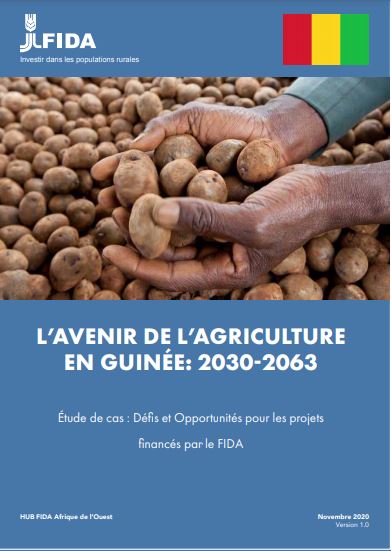The future of agriculture in Guinea Bissau: 2030 – 2063

ABSTRACT
The political instability of the last several years has severely impacted the agricultural sector. The lack of investment in rural infrastructure, transport, land use planning and technical and financial support programs leading to a lack of access to modern means of production, to information on markets, producer organizations and technical advice, which have limited the large-scale development of agricultural activities. The very poor state of communication infrastructure (roads and sea routes) has hampered the integration of regional and local markets.
The grain deficit has widened following the growing interest in cashew nut cultivation. Despite the country’s potential in terms of arable land and water resources, agricultural production has been limited by the sharp drop in yields. The yield of rice, the main cereal produced and consumed, decreased following the degradation of soils and hydraulic installations and the isolation of production areas.
The increase in cereal production, mainly linked to the increase in areas under cultivation, has been insufficient to cover the growing needs of the population, which have been covered mainly by commercial imports of cereals (largely rice). This situation poses the problems of dependence and great vulnerability to international market prices and has affected food and nutrition security. Physical access to food is severely hampered by the poor condition of transport infrastructure which conditions the integration of regional and local markets.
GDP reached a growth rate of 5% in 2018 at 635 USD / per capita. This recovery, after a period of sharp contraction was driven by an increase in food crop production (9%) and by an exceptional cashew nut marketing campaign. Agriculture contributes to around 52% of GDP, followed by the tertiary and secondary sectors.
Based on the average food consumption profile of sub-Saharan Africa, projections show that Guinea-Bissau will experience an expected increase in cereal production needs of around 480,000 tons in 2030, 766,000 tons in 2050 and 1,228. 000 tons in 2100, mainly driven by rice consumption. The quantities of roots and tubers and of fruits and vegetables are not negligible. The demand for food consumption will require increased land use and investment. Public infrastructure investments in water management systems for rice production will amount to around USD 241 million per year until 2030 and around USD 384 million per year for the ten following years. Furthermore, rice production costs will drive private investment of around USD 43 million over the next ten years, from 2020 to 2030.
Sufficient policy frameworks are in place, but their implementation has been compromised by political events: National Poverty Reduction Strategy Document, Agricultural Development Policy Letter, National Program for Food Security, Program in the nutrition sector, Strategic and Operational Plan 2015-2020. The need to reactivate them with the help of development partners is paramount. The country has sufficient natural, physical and human resources to reach its goals.